Carpets have gone far beyond their utilitarian function. Today a good carpet is an investment, a work of art as well as a way of self-expression. When choosing a rug, you not only have to consider how it will reflect your room and its decor, you can also make a statement. We have chosen some unconventional designs for you to see: good design turns everyday objects into masterpieces, even if it is a rug beneath your feet.
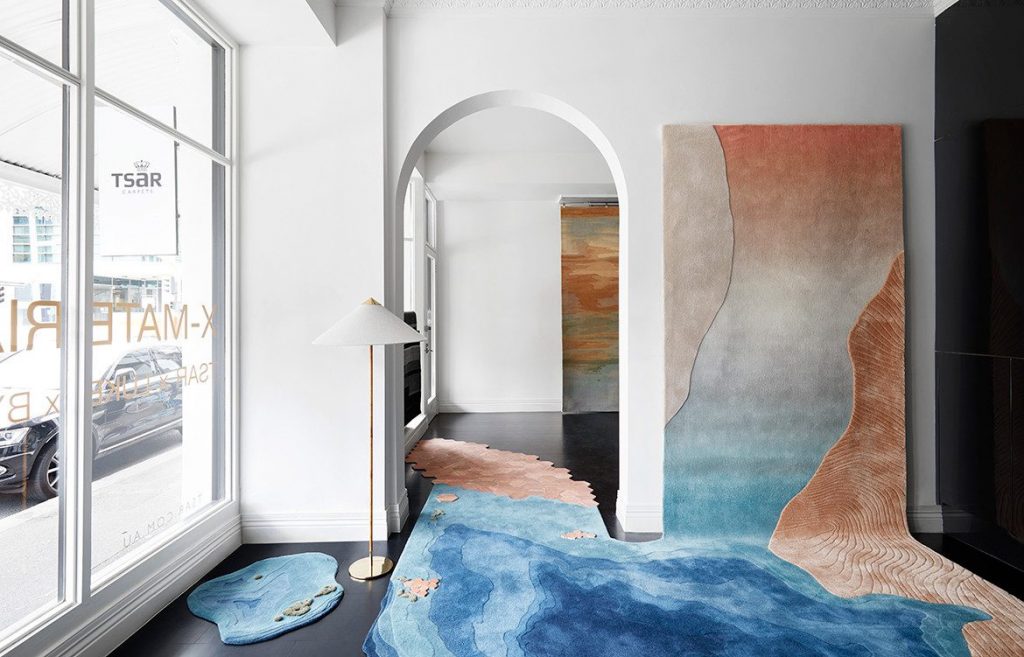
A collaboration that stunned Melbourne Design Week this year, X-Materiality installation by Tsar Carpets, Byzantine Design and Luke Furniture is aimed to challenge perception of the product by blending and extending the visitor’s experience of interior materials. The featured carpets of The Lagoon collection by Tsar Carpets highlight the relationship between the sea and the shore.

Collaborative installation X-Materiality by Tsar Carpets, Byzantine Design and Luke Furniture (also header image)
Rather than serving the sole purpose of being a floor covering, it is an engaging story by Tsar’s in-house designer Teresa Ceberek that the viewer can interact with. A wide range of textures, layers and colors are used to tell a nostalgic, calming story of coastlines, sand and ocean formations. Created with the help of new techniques through experimentation and play, the pieces also evoke a sensory and tactile response.

The Living Surface studio by Lizan Freijsen. Ph: Lotte van Stekelenburg
The hand-tufted carpets by the Dutch artist Lizan Freijsen also challenge conventional perception of carpets and take inspiration in nature but in a different way. Freijsen gets the patterns for her rugs from fungi, mold and moisture stains, thus transforming something ugly that is usually banned from our homes into valuable objects.
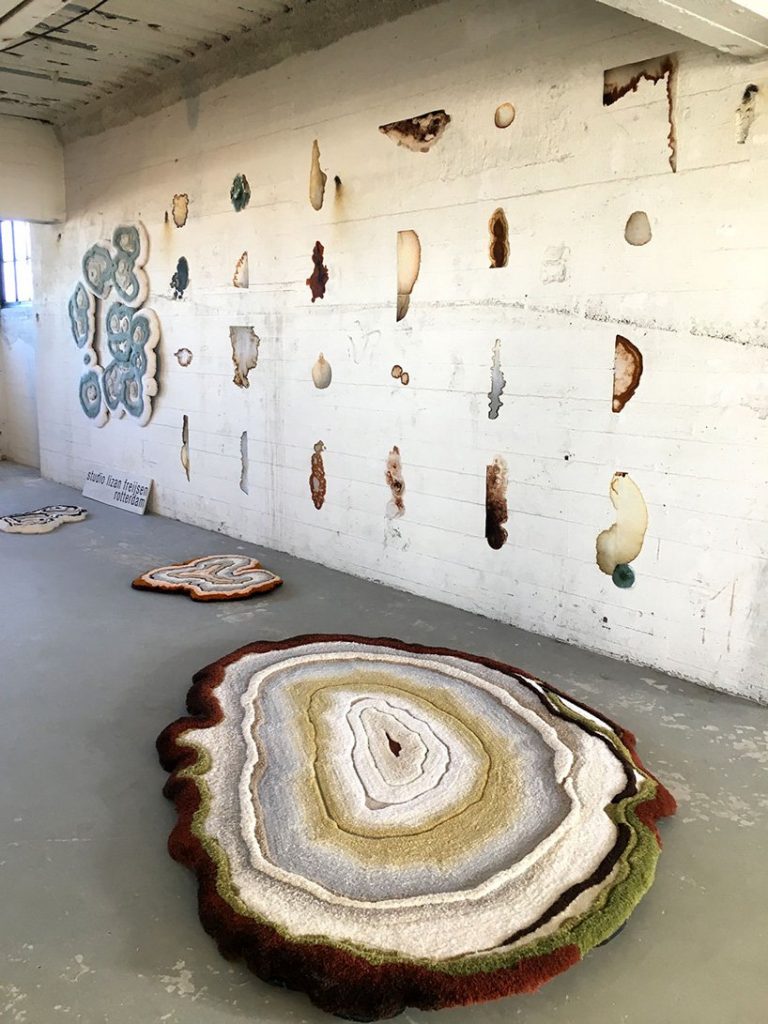
Carpets by Lizan Freijsen
The idea first came to Freijsen when leakage stains appeared on the wall of her shed and with time it appeared to be a painting by nature. In her pieces she demonstrates the beauty of imperfection and decay delivered as a result of the time-consuming hand-tufting craft.
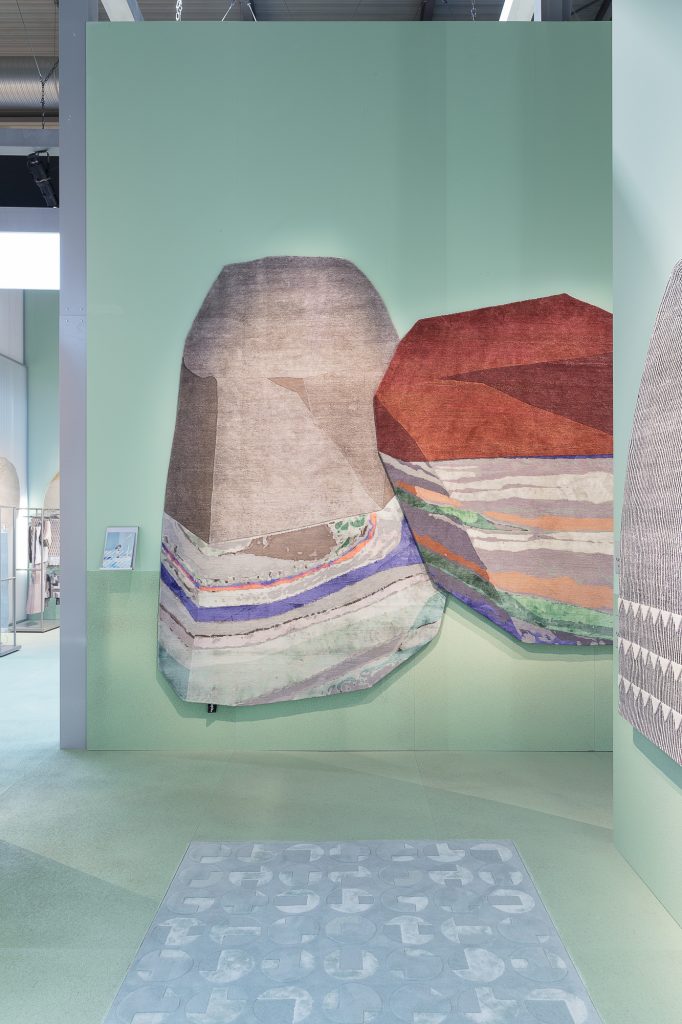
Fordite collection by Patricia Urquiola for CC-Tapis
The Spanish designer and the member of BEOPEN Community Patricia Urquiola developed the Fordite collection for the carpets manufacturer CC-Tapis. The pieces of the range can boast one-of-a-kind design and a sustainable approach in production. The collection is named after a byproduct of the car manufacturing industry: a multicolored stratum of enamel automotive paint that has built up over time within the factory, which is then baked and polished until it resembles a jewel.
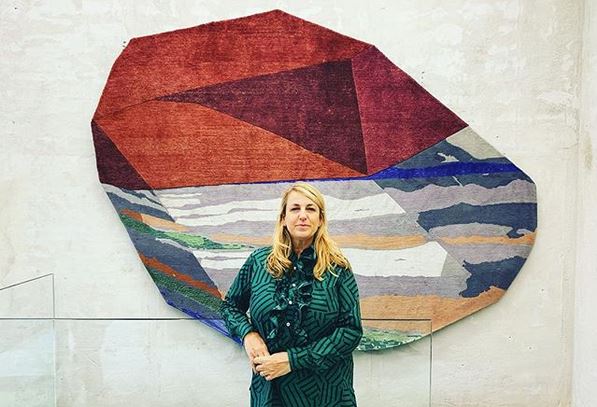
Fordite collection by Patricia Urquiola for CC-Tapis; source: Instagram
The sharp-angled outline pays homage to the shape of the stone, while the ever-changing colors of the lower area can vary, as the Himalayan wool, pure silk and aloe used is sourced from the material excess left over from CC-Tapis’s regular production process. Thus, the colour scheme is subject to availability of wool scraps. Recycled wool is accented with Lurex threads and has the same layered appearance as original Fordite.

Parquet carpets by Front
The Swedish design studio Front led by designers Anna Lindgren and Sofia Lagerkvist has created collection of modular colourful rugs, which can be folded up into matching poufs. Aptly named Parquet, the collection is inspired by old floors in palaces and churches that often were decorated with geometrical patterns.
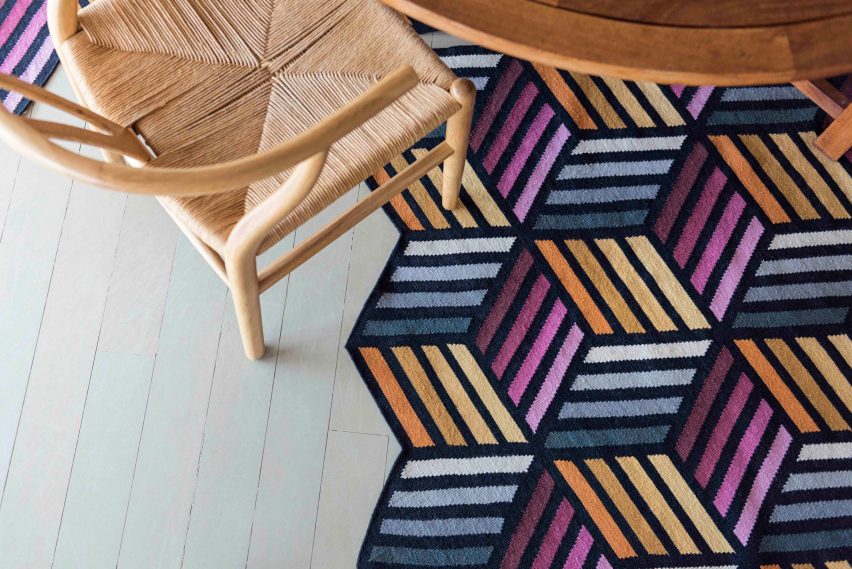
Parquet carpets by Front
The shapes in each of the three designs – Tetragon, Rhomb and Hexagon – fit together as a jigsaw puzzle and can also be applied to poufs. All of the products are manufactured from wool using an old flat-weaving technique called kilim, which is typical in the Middle East.